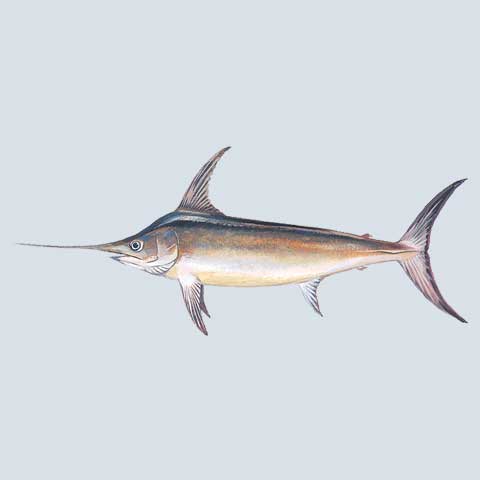Restaurant openings and Asian market conditions will determine the health of the West Coast swordfish industry in 2021. Last year, supply chains in the early season were disrupted with the onset of covid-19, but as the calendar turned toward July, some markets reopened.
Though the drift gillnet fishery off California operates in the nearshore waters with time and area closures, the commercial fishing season for deep-set buoy gear doesn’t have hard start and stop dates.
“As for the new deep-set fishery, there are currently no seasonal restrictions,” says Chugey Sepulveda, a laboratory director at the Pfleger Institute of Environmental Research, in Oceanside, Calif. “Because swordfish are highly migratory, and the bulk of fish reside off the West Coast from about July-January, this is when we see most of the fishing activity.”
According to data from PacFIN, the swordfish fleet wound up at 320 metric tons for the year, down substantially from the 432 metric tons landed in 2019. As of April 2021, landings stood at 72 metric tons, and ex-vessel offerings averaged $3.06 per pound.
Meanwhile, ex-vessel prices averaged $3.89 for 2020. As a generality ex-vessel prices start out higher, in the $8 per pound range when fresh swordfish start hitting markets in July; then prices decline as volume increases throughout the remainder of the year.
The quality of fish caught with deep-set buoy gear have been fetching premium prices, but some distributors wanting to move larger volumes at lower prices on the retail end turn to gillnet-caught fish or imports, which means cheaper prices on the ex-vessel end.
The deep-set buoy gear fishery, meanwhile, continues to yield high catches of swordfish and drastic reductions in bycatch. Though the gear type has not been authorized to fish as part of the present FMP 16, vessels are operating under an exemption permit.
“It’s shown to be highly selective for swordfish,” says Chris Fanning, a fisheries policy analyst with NMFS in Long Beach. Catches from the deep water sets have been running up to 96 percent swordfish.







